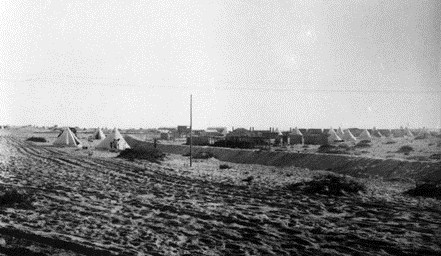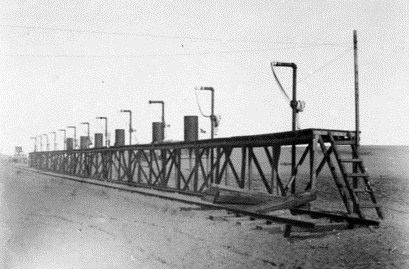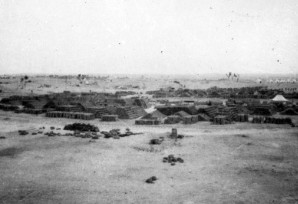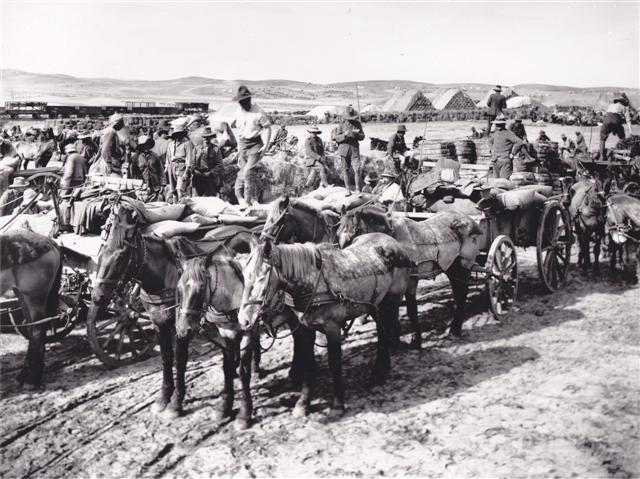Supply in Palestine





Water Supply
Not only men but almost as many animals had to be supplied daily with water. In the harsh environment of the deserts, and even in the more fertile parts of Palestine it was a mammoth and vital task.
A 40cm pipeline was laid across Sinai parallel to the rail track to support the advancing forces.
As this progressed, standpipes were set up to facilitate multiple refilling of water wagons. The pipeline was covered with a mound of sand to both protect the pipeline from the sun and from enemy air raids.
Australian War Memorial B02916, H02851
Forage Supply
Equally important to water was the supply of forage for horsed combatants and draught animals – at a volume which matches today's liquid fuel demands, and with the added perishability problem.
With limited or non-existend fodder available, processing plants were established in Egypt to produce replacement types of forage. Here locals hand-crush and bag corn.
The produce was shipped forward by rail to massive forward dumps, such as the one at El Arish.
Australian War Memorial H03096, H13696
Supplies Distribution
Rail delivery underpinned the supply system. From railhead, it was moved forward by motor transport when this could handle the conditions, then passed to divisional horse transport for delivery to the front. When conditions grounded the primitive lorries, the horse transport had to bridge the gap.
Australian War Memorial B01532
Supply in Palestine




